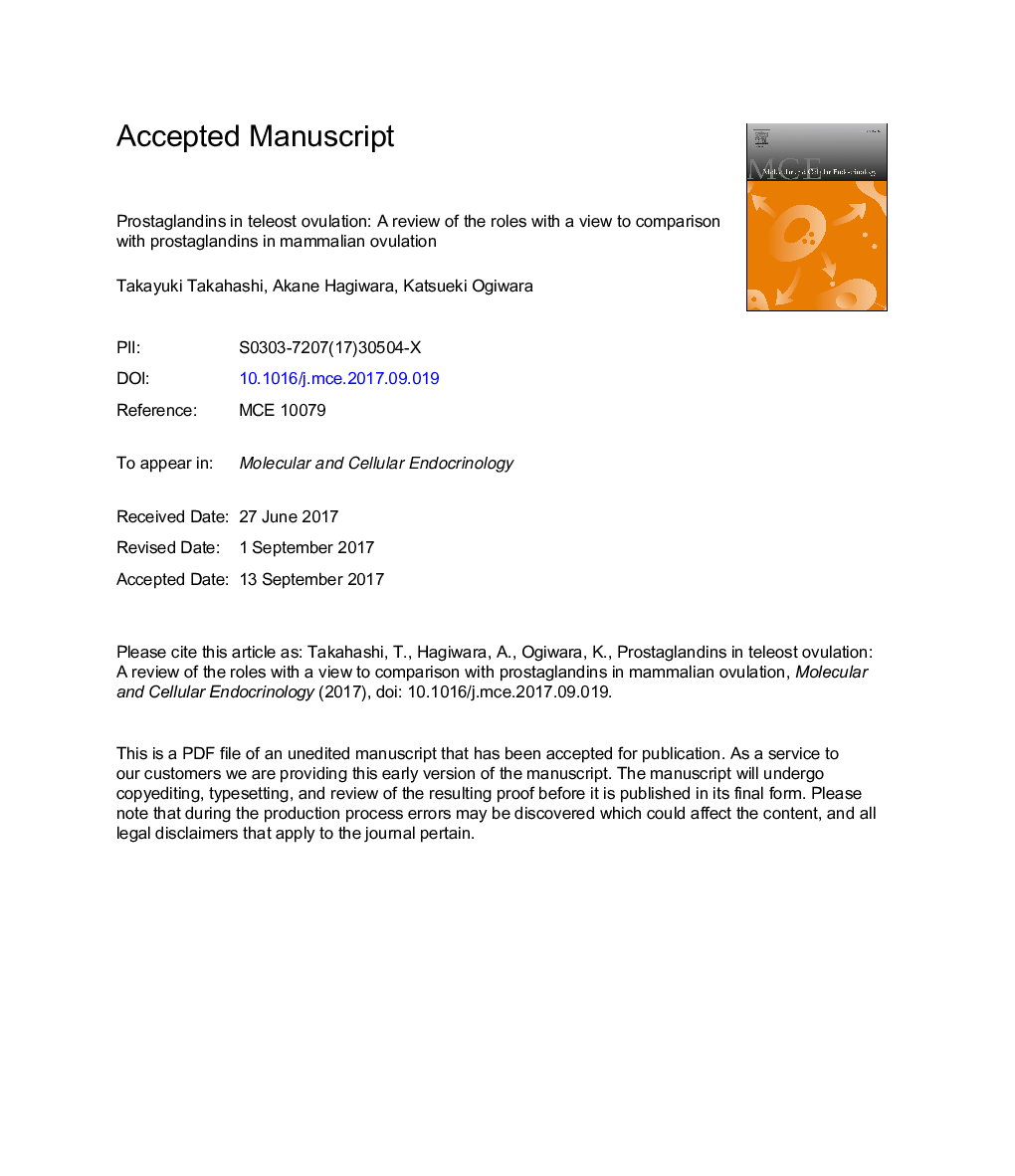| Article ID | Journal | Published Year | Pages | File Type |
|---|---|---|---|---|
| 8476560 | Molecular and Cellular Endocrinology | 2018 | 55 Pages |
Abstract
Prostaglandins are well known to be central regulators of vertebrate ovulation. Studies addressing the role of prostaglandins in mammalian ovulation have established that they are involved in the processes of oocyte maturation and cumulus oocyte complex expansion. In contrast, despite the first indication of the role of prostaglandins in teleost ovulation appearing 40 years ago, the mechanistic background of their role has long been unknown. However, studies conducted on medaka over the past decade have provided valuable information. Emerging evidence indicates an indispensable role of prostaglandin E2 and its receptor subtype Ptger4b in the process of follicle rupture. In this review, we summarize studies addressing the role of prostaglandins in teleost ovulation and describe recent advances. To help understand differences from and similarities to ovulation in mammalian species, the findings on the roles of prostaglandins in mammalian ovulation are discussed in parallel.
Related Topics
Life Sciences
Biochemistry, Genetics and Molecular Biology
Cell Biology
Authors
Takayuki Takahashi, Akane Hagiwara, Katsueki Ogiwara,
